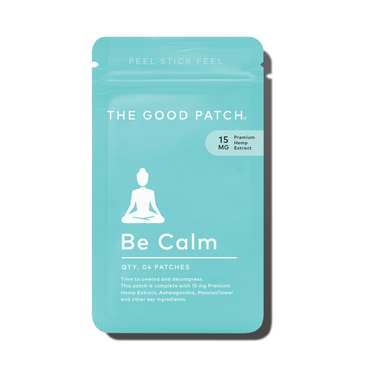We all have dreams and visions for what we want in life, and there’s no reason they shouldn’t become a reality. As you well know, it’s not likely everything you want will fall into place without a bit of effort. To achieve your desires and personal goals, the first step is to set some!
We talk about goals all the time but learning to make an effective goal, create a time-bound action plan, and accomplish it sometimes requires some support. That’s why The Good Patch is here to help.
We’ve put together a guide of everything you need to know. Whether it’s new resolutions, focusing on well-being, or hoping to increase productivity, we’ve got your back.
It isn’t always easy to understand what you want, so it can be even more of a challenge to put in the leg work needed to bring your dreams to fruition. Luckily, we have faith in you and your ability to take control of your life.
You’ve made it this far, so keep reading for our best tips!
What Is a Goal?
Before you jump into your new phase of personal growth and self-care, get a grasp of what it really means to dream up a goal.
What Is a Goal Not?
Sometimes the quickest way to answer this question is for us to understand what a goal is not. The first thing you should know about goals is how they differ from objectives and missions.
While they can influence your bigger goals, objectives and missions are not goals themselves. However, this doesn’t mean you should run from them! Making objectives and determining your mission often make it easier to create and complete your goals.
Objectives tend to be the steps you take to reach your goals. Maybe you decide to give yourself the objective of going to bed at 9:30 pm instead of 10:00 pm to get more sleep. Think of objectives as the milestones you need to check off your to-do list to get where you’re going.
You’ve probably heard of mission statements that describe the purpose of a company or project — these can apply to you too! By forming a sense of purpose, you’ll make it easier to find the life goals most important to you.
Short-Term vs. Long-Term Goals
Be careful not to fall into the myth that everything needs to be a big goal to impact your life in a meaningful way.
While you probably have grand visions for your career and personal life, it is important to craft short-term goals that keep you moving forward. If all your goals take years to complete, it can begin to feel tedious to continue chasing them.
Of course, both types of goals are necessary. Planning for the short term improves your time management and pushes you over the small challenges, but maintaining long-term goals is essential to bringing your biggest dreams to life.
Simply put, a goal is a vision with a due date. Without a deadline, a goal goes back to being just a dream.
Why Should You Set Goals?
Great, we can define a goal, but what’s the point?
To tackle a big dream, you’ll need a roadmap to help you navigate the journey ahead. Setting goals is the plan required to achieve those goals.
As soon as you’ve set a goal, you’re that much closer to getting where you want to go. Though that’s just the beginning of the road, you’re headed towards many benefits. Let’s dig into the benefits of setting solid goals.
Self-Confidence
Creating goals can be an incredibly empowering process. As you achieve your short-term goals, you will gain the confidence you need to reach your longer-term ones. Once you believe you can complete your goals, you will naturally shoot higher and higher and keep the ball rolling.
Research shows that setting reasonably challenging goals is the most effective way to boost your performance and confidence.
Clarity
Realizing our dreams can be difficult because it’s so easy to get distracted by the hustle and bustle of life. Keeping goals pushes you to take concrete steps toward your dreams rather than getting sidetracked by small forms of instant gratification.
Don’t worry if you struggle to stay on task; we’ve got you covered. Give the Think patch a try if you find yourself losing focus easily.
How Do I Set Goals?
We want you to begin excelling as quickly as possible, so we’ve split the goal-setting process into five simple steps.
1. Find Your Purpose
Okay, maybe you don’t need to embark on an existential quest to discover the meaning of life, but figuring out what is most important to you is fundamental.
Though it may sound cliche, stay true to yourself. In the sea of social media influencers and societal expectations, we often stray toward what we think we should do instead of what we want to do. Goals that are meaningful to you will be far more useful.
2. Keep Your Goals SMART
- Specific: Is your goal detailed enough? If your goal is to get in better shape, ask: What exercises will I do? How many times per week
- Measurable: Can you measure whether you are reaching your goal? Setting a goal for how often you exercise will allow you to compare each week and see an increase or decrease.
- Achievable: Is the goal you have set attainable? Have others reached it before?
- Realistic: Is your goal realistic, given your unique situation? Working out daily for five hours may not be realistic (nor super healthy) if you have other responsibilities.
- Timely: When will you complete this goal? Giving yourself a deadline will give you a sense of urgency and encourage you to do what is necessary to achieve your goal.
Think on your own for a moment. What would be a SMART goal if you want to get in shape?
One example might be — I will be able to run a mile in under 10 minutes by the end of 30 days. This is a specific goal that can be measured with a timer. It’s both achievable and realistic, with a time frame of one month.
3. Plan It Out
Planning your goals can get complicated. Beyond checking your schedule, consider these phases:
- Utilize objectives: As we mentioned briefly, objectives are tangible actions you can take.
- Make a reward system: Treat yourself! Celebrating small wins is important, so reward yourself as you power through your objectives.
- Schedule: Get on paper when you get all this done. At the same time, be okay with changing it up. Things don’t always go to plan, so you have to stay flexible.
4. Pursue Your Goals
Now that you have planned it all out, it’s time to get going! You’ve done a lot of the heavy lifting already, but there are a few things to keep in mind.
Goal achievement starts with small battles and small wins. Get comfortable breaking down your goals into attainable parts rather than just jumping into the deep end.
As you move towards the finish line, keep track of your progress. This helps you figure out what you still have to do while also reminding you how far you’ve come.
Lastly, be kind to yourself. We all make mistakes, and sometimes we just have to skip to plan B.
5. Follow Through
Life can get crazy; often, that’s when we lose sight of our goals, but it’s never too late to get back on track. Some days we need a little extra push and self-love (like the Rise And Shine Set) to give us the umph.
Consider sharing your goals with a close friend who can give constructive criticism when you veer off course.
Conclusion
Now that you’ve finished our article, you’re well prepared to set the goals necessary to get what you want out of life. Remember to make SMART goals that follow a clear action plan — you’ll be at your destination before you know it!
Sources:
SMART Goals: A Powerful Strategy for Students | Post University
The Importance, Benefits, and Value of Goal Setting | Positive Psychology
Achieving your goals: An evidence-based approach | Michigan State University







